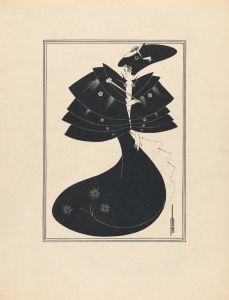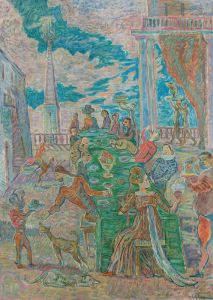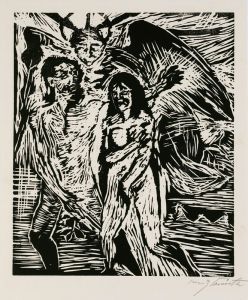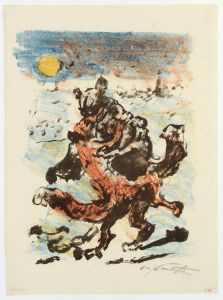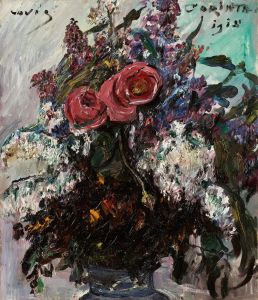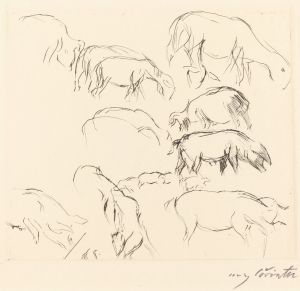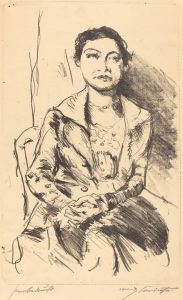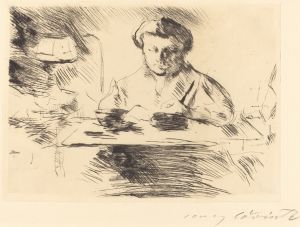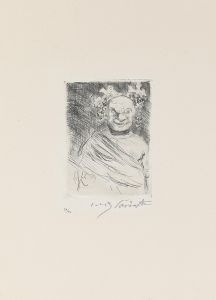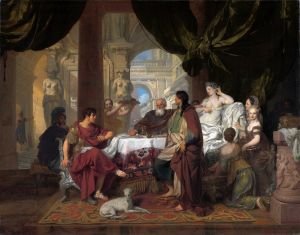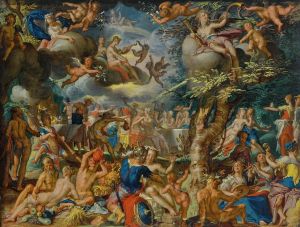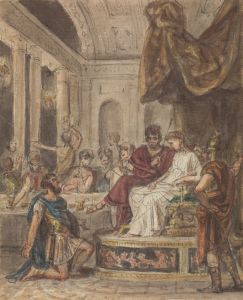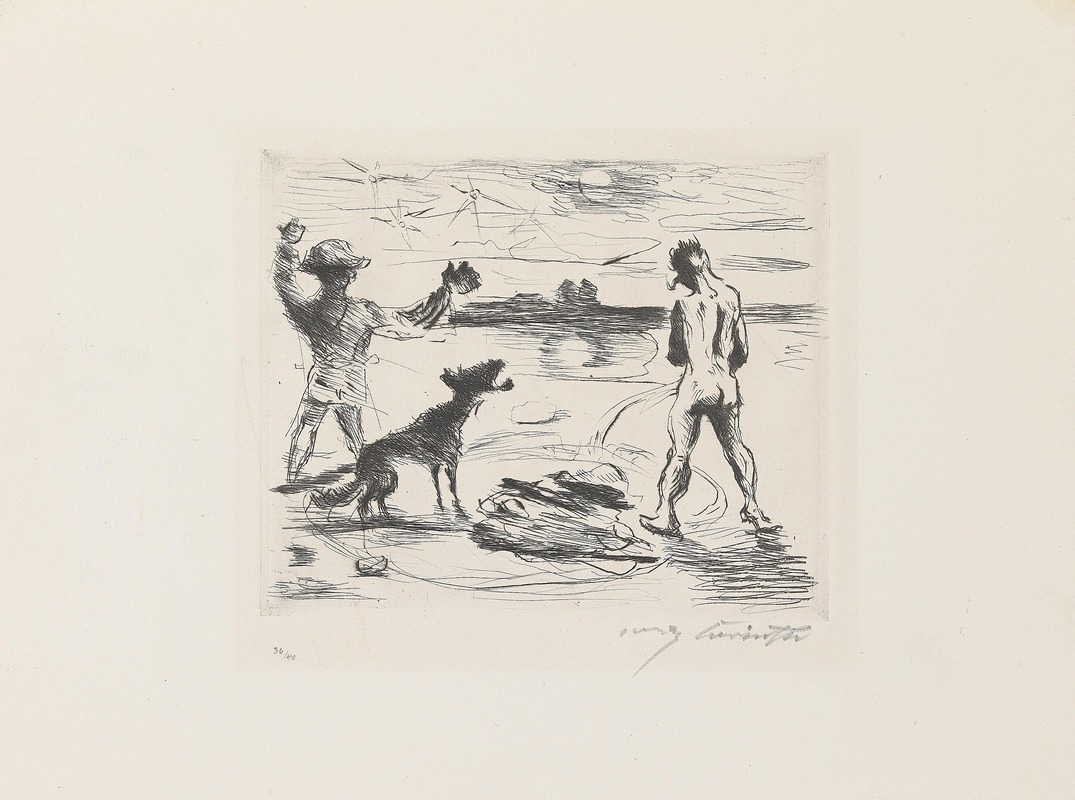
Gastmahl des Trimalchio 13
A hand-painted replica of Lovis Corinth’s masterpiece Gastmahl des Trimalchio 13, meticulously crafted by professional artists to capture the true essence of the original. Each piece is created with museum-quality canvas and rare mineral pigments, carefully painted by experienced artists with delicate brushstrokes and rich, layered colors to perfectly recreate the texture of the original artwork. Unlike machine-printed reproductions, this hand-painted version brings the painting to life, infused with the artist’s emotions and skill in every stroke. Whether for personal collection or home decoration, it instantly elevates the artistic atmosphere of any space.
Lovis Corinth's painting Gastmahl des Trimalchio 13 (translated as Trimalchio's Feast 13) is one of the works inspired by the Roman novel Satyricon, attributed to the author Petronius. The Satyricon is a satirical narrative that provides a vivid depiction of Roman society during the 1st century CE. One of its most famous episodes is the "Cena Trimalchionis" (Trimalchio's Dinner), which describes an extravagant and grotesque banquet hosted by Trimalchio, a wealthy freedman known for his ostentatious display of wealth and lack of refinement.
Lovis Corinth (1858–1925) was a German painter and printmaker associated with the late 19th and early 20th-century art movements, including Impressionism and Expressionism. Corinth's works often explored themes of mythology, history, and literature, and his interpretation of Trimalchio's feast reflects his interest in dramatic and dynamic compositions. Corinth was known for his vigorous brushwork, bold use of color, and ability to capture the intensity of human emotion, all of which are evident in his depictions of the Satyricon scenes.
Gastmahl des Trimalchio 13 is part of a series of works by Corinth that illustrate the decadence and excess of Trimalchio's banquet. The painting portrays a chaotic and lively scene, emphasizing the indulgence and absurdity of the event. Corinth's interpretation highlights the grotesque humor and social critique inherent in Petronius's text, showcasing the disparity between Trimalchio's wealth and his lack of cultural sophistication. The figures in the painting are rendered with exaggerated expressions and gestures, contributing to the sense of disorder and excess.
The exact date of creation for Gastmahl des Trimalchio 13 is not widely documented, but it is part of Corinth's broader engagement with literary and historical themes during his career. The painting reflects Corinth's mature style, characterized by a blend of realism and expressionistic elements. This approach allows him to convey both the physicality of the banquet and the underlying commentary on human behavior and societal norms.
Lovis Corinth's works, including his Trimalchio series, are significant for their ability to bridge traditional and modernist approaches to art. His paintings often combine classical themes with a modern sensibility, making them relevant to contemporary audiences while remaining rooted in historical and literary contexts. Today, Corinth's works are celebrated for their technical mastery and emotional depth, and they continue to be studied for their contributions to the development of modern art in Germany.
Further details about Gastmahl des Trimalchio 13 specifically, such as its current location or provenance, are not readily available in public records.





